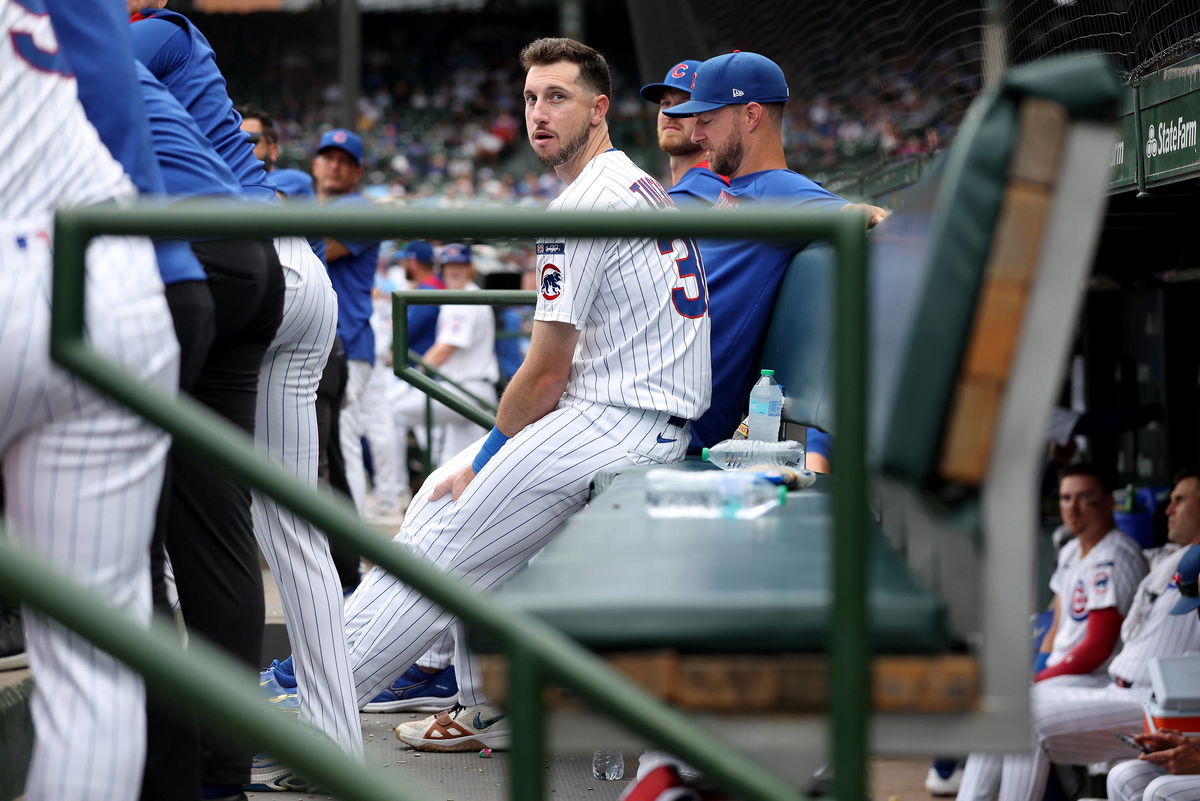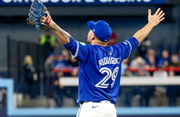
Imago
Image: MLB.com

Imago
Image: MLB.com
After a 0-for-4 performance against the Brewers on August 18th and boos from the Wrigley faithful, manager Craig Counsell decided to bench Kyle Tucker for a three-game “reset.” Tucker finally returned to the Right field on Thursday’s match against the same Brewers and went once again 0-for-4 on a 1-4 Cubs loss. The player who was once slashing .311 in June entered the Thursday match with just 16 wRC+ in August. Is this just a slump, or is there something more at play?
Watch What’s Trending Now!
The story started on June 1st. Tucker jammed his hand on a slide against the Cincinnati Reds and left that game. He wasn’t in the starting lineup for the next two games. Then he got back, and what followed was pure magic. Tucker was slashing .311/.404/.578 with five homers, nine doubles, and 173 wRC+ for the rest of June. Then in July, he slashed just .218/.380/.295, and in August, his wRC+ was 16. But what went wrong?
ADVERTISEMENT

Now, Tucker has broken his silence. “We did some more (X-rays) and saw a little small fracture in there,” he revealed. “It was already a week or two after that, and it was already healing. I just kept playing through it and thought at some point it would go away.” The injury lingered, but so did his elite performance. And it makes this a complicated choice. “I’m pretty much past it,” he further remarked.“It’s fine.”
ADVERTISEMENT
With a massive free-agent contract looming, projected by insiders like Jim Bowden to be between $500 million and $650 million, one might wonder why Kyle Tucker would risk playing through an injury. However, Tucker himself explained his decision to avoid the injured list, stating, “There wasn’t a need to go on the IL because I could still do everything. It was just a pain tolerance at that point, rather than I couldn’t physically do it.”
In essence, Tucker felt the issue was a matter of enduring pain rather than a physical limitation that would prevent him from performing on the field.
ADVERTISEMENT
And about the mechanics?
Well, Tucker insists he never intentionally altered his swing to compensate for any physical issues. “I didn’t try and change my mechanics or anything,” he stated. However, he acknowledged that his mechanics might have degraded over time without him realizing it. “I don’t know. I was just playing with it, and I was doing fine for a while. After a while, it kind of turned. I don’t know if that was the reason why, but it’s how things played out,” he further added.
The decline is starkly illustrated by advanced data from his plate appearances. During this slump, his average launch angle fell to just 9 degrees, compared to his 17-20 degree average in June. His hard-hit rate plummeted from 42.6% to 27.9%, and his average bat speed dipped from 72.4 mph to 71 mph in August. Consequently, his ground-ball rate surged to 50%.
ADVERTISEMENT
Jed Hoyer, the Cubs’ President of Baseball Operations, offered a similar assessment from the front office. “I think when you look at his swing early in the year versus now, it’s less connected and, therefore, less powerful,” Hoyer observed. Despite these observations, Tucker himself struggles to identify the specific cause of his problems. “I don’t know, I can’t really point to one thing,” he admitted. “If I could, I would have already.”
Top Stories
“Goodbye My King” — Toronto Gets Emotional as Blue Jays Make Drastic Call on 28-Year-Old Pitcher

MLB Trade Rumors: Dodgers to Trade Tyler Glasnow & Dalton Rushing to Red Sox for $7.7M Left Fielder

Yankees Offensive Free agency Ends Early as Cody Bellinger-Kyle Tucker Pursuit Ends Before Beginning: ESPN Insider

MLB Trade Rumors: Red Sox’s Offseason Hopes Crumble as Alex Bregman Eyes Ending Detroit’s 110-Year Drought

“Not Good for the Blue Jays” – Loyalist Issues Stern Warning as $4.8B AL Rival Strengthens Arsenal

Yet, despite this struggle, Tucker has walked (16.0%) more than he has struck out (15.3%) since July 1. And his season wRC+ is still 131 with his fifth straight season with at least 4 WAR. But, with rookie Owen Caissie’s recent emergence, Tucker’s future in Chicago is suddenly uncertain. The question remains: Will he find his form and secure his massive payday?
ADVERTISEMENT
ADVERTISEMENT
ADVERTISEMENT
ADVERTISEMENT

